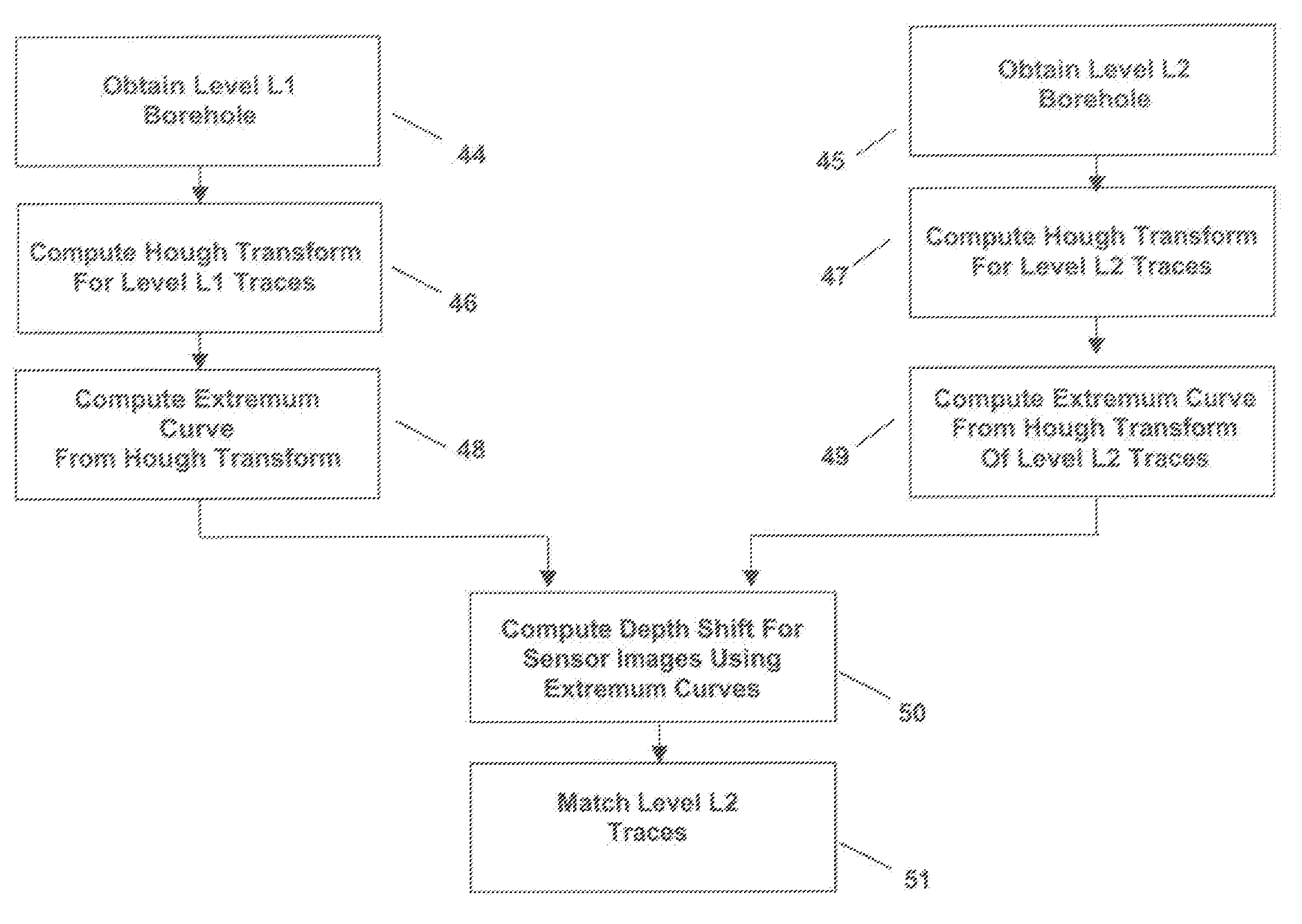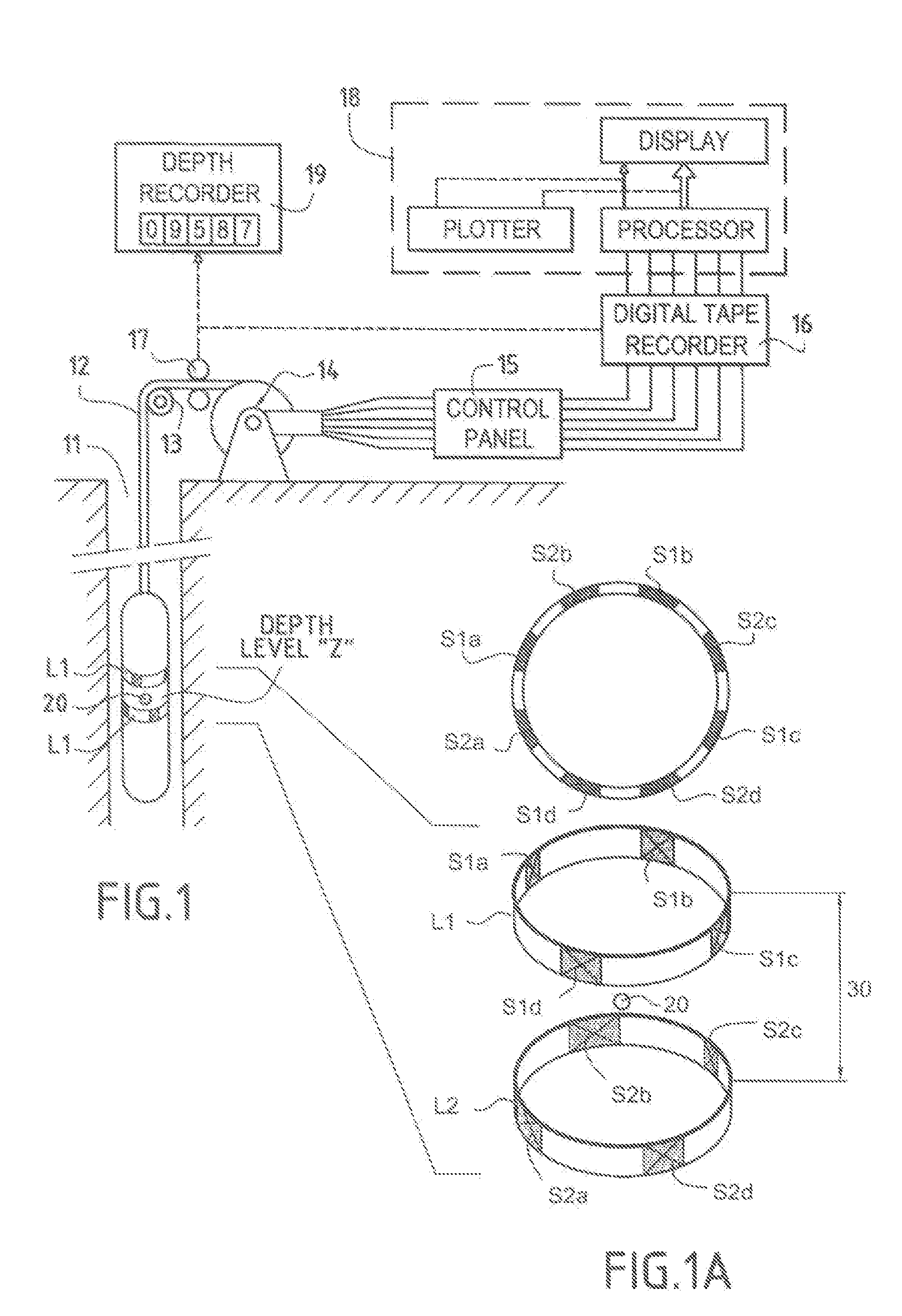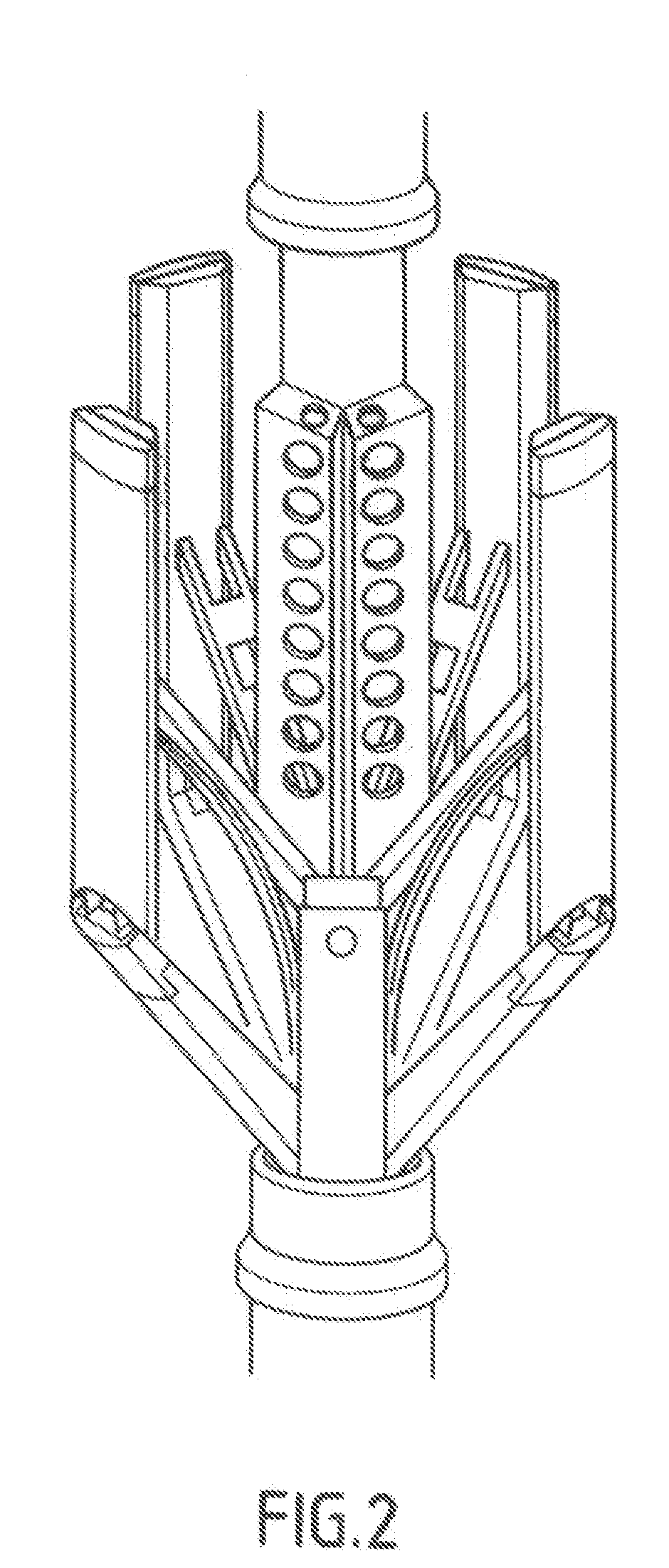Method and apparatus for improved depth matching of borehole images or core images
a technology of depth matching and boreholes, applied in seismology for waterlogging, instruments, reradiation, etc., can solve the problems of uniform motion, inconvenient use, and inability to accurately match the depth of the borehole,
- Summary
- Abstract
- Description
- Claims
- Application Information
AI Technical Summary
Problems solved by technology
Method used
Image
Examples
first embodiment
[0025]Briefly, in the present invention, individual traces from the sensors of any first specific level of sensors on a logging tool are converted into one signal representing those traces. The one signal represents all the traces (averaged log signal) and includes an average borehole-crossing signal. The averaged log signal is generated by performing a prior art computation of bedding dips or flowlines (angle and azimuth) on the traces from each sensor and an average or median computation is applied to all the samples from sub-sensors that comprise each sensor aligned along the pre-determined dip. This is repeated for a second specific level of sensors vertically offset from the first specific level of sensors and a second averaged signal is obtained. Then a prior art single log trace depth matching technique is applied to two averaged signals to determine the optimum depth “offset” necessary to precisely match the two averaged signals. The “offset” determined is then applied to th...
second embodiment
[0026]Briefly, in the present invention the Hough transform is utilized to generate three-dimensional images from well log signals. The three dimensional images are used to create two-dimensional extremum curves that are in turn used to calculate an offset. The offset is used to depth match the well log signals obtained from vertically spaced sensors on a well logging tool, or signals obtained during different logging passes through the same borehole. The detrimental effects of partial and non-overlapping sensor coverage of a borehole wall are reduced, if not eliminated, because of the characteristics of the Hough image transform, and because depth matching is finally applied to the two dimensional extremum curves derived from the three-dimensional images. More specifically, a depth matching offset is calculated directly from two dimensional extremum curves derived from the Hough three-dimensional images without the need for calculating dip and azimuth of bed boundaries in an earth ...
PUM
 Login to View More
Login to View More Abstract
Description
Claims
Application Information
 Login to View More
Login to View More - R&D
- Intellectual Property
- Life Sciences
- Materials
- Tech Scout
- Unparalleled Data Quality
- Higher Quality Content
- 60% Fewer Hallucinations
Browse by: Latest US Patents, China's latest patents, Technical Efficacy Thesaurus, Application Domain, Technology Topic, Popular Technical Reports.
© 2025 PatSnap. All rights reserved.Legal|Privacy policy|Modern Slavery Act Transparency Statement|Sitemap|About US| Contact US: help@patsnap.com



